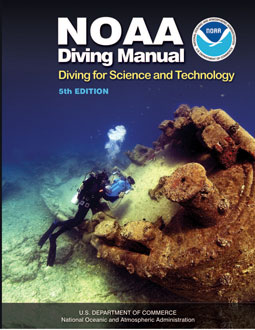DEPTH Blog
Safety Considerations for Diving Around Sharks
The danger from sharks to humans is a combination of size, aggression, and dentition. Any shark over 3 ft (0.9 m) long should be regarded cautiously, and if over 8 ft (2.4 m) long, should be avoided even if this requires that the diver leave the water. For example, grey reef sharks (Carcharhinus amblyrhynchos) that range between 3–7 ft (0.9–2.1 m) in length are numerous in shallow tropical waters, and diving operations often cannot be performed unless the presence of sharks in the area is tolerated. When such sharks are in the vicinity, divers should avoid making sudden or erratic movements. Common sense dictates that no injured or distressed animals should be in the water because these are known to precipitate shark attacks. When operations are conducted in the presence of sharks, each group of divers should include one diver who keeps the sharks in view and is alert for changes in their behavior. The chances of trouble are minimal as long as the sharks swim slowly and move naturally. The situation may become dangerous, however, if the sharks assume agitated postures, such as pointing their pectoral fins downward, arching their backs, or elevating their heads. If feeding in a group, sharks may become highly agitated and bite at anything and everything, including each other. Most victims are attacked violently and without warning by single sharks. The first contact may be a “bumping” or an attempt by the shark to wound the victim prior to the definitive strike. Severe skin abrasions and lacerations can be caused in this manner due to the abrasiveness of shark skin, which is covered with denticles, small tooth-like projections which are modified placoid scales.
The following are recommendations for avoiding and/or protection from potentially dangerous encounters with sharks:
- Avoid shark infested waters, particularly at dusk and after dark. Do not dive in known shark feeding grounds.
- Swim in groups. Sharks tend to attack single swimmers.
- When diving, avoid deep drop offs, murky, turbid water, or areas near sewage outlets.
- Maintain constant vigilance.
- Do not tether captured (i.e. speared) fish to your body.
- Do not corner or provoke a shark.
- If a shark appears, leave the water with slow, purposeful movements. DO NOT PANIC OR SPLASH. If the shark approaches a diver in deep water, he should attempt to move to defensive terrain so that he is protected from the rear. If a shark moves in, attempt to strike a firm blow to the snout.
- If stranded at sea and a rescue helicopter arrives, cautiously exit the water at the earliest opportunity. Surface chop and sounds created by rotor wash attract sharks.
(Source: NOAA Diving Manual: Diving for Science and Technology, 5th Edition; 2013, Best Publishing Company)
SUGGESTED READING
When you subscribe to the blog, we will send you an e-mail when there are new updates on the site so you wouldn't miss them.








